Are You Killing Your Fat Cat With Kindness?
While a chonky fat cat can provide plenty of laughs on YouTube or Instagram, it’s no laughing matter when we consider how great the risks of being fat are to their health.
As we discussed in our article on obesity in pets an overweight pet, whether a dog or a cat just doesn’t have the long life expectancy that we would love them to have.
Much of the cat nutritional advice we learned years ago is now obsolete and when we combine this with the move to keep cats predominantly indoors it’s no surprise that the chonk movement is alive and well.
Read on to discover how you can keep your cat trim, fit, and healthy.
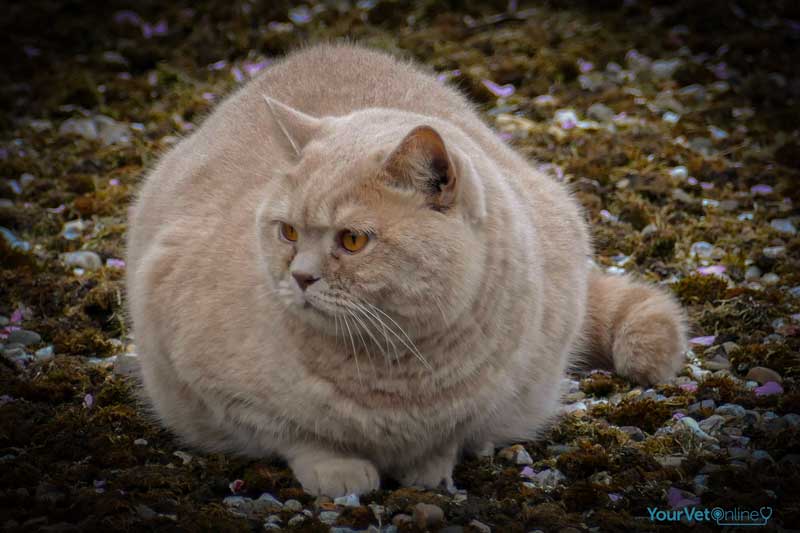
[easy-social-share]
Video: How To Assess Your Pet’s Body Condition Score
Before we get started, check out this video where Dr Leigh show’s you how to assess your pet’s body condition score (ignore that it is a dog model, the same applies for your cat!).
Being overweight can cause and exacerbate several health conditions.
While many cats fit a normal weight range until the age of 2 after this many suffer weight gain.
One of the main conditions that are aggravated by being overweight is arthritis – when joints lose cartilage and become painful to move.
For a cat that is overweight, this is double trouble. We want these cats to increase movement but the pain from arthritis can limit this.
Diabetes mellitus is another disease that is commonly seen in overweight cats. Just like humans with type 2 diabetes, diet plays a very strong role in the development and progression of diabetes.
Diabetes occurs when the cat has either insufficient production of or response to insulin, the main hormone that regulates blood sugar.
For some cats, a change in diet can reverse diabetes.
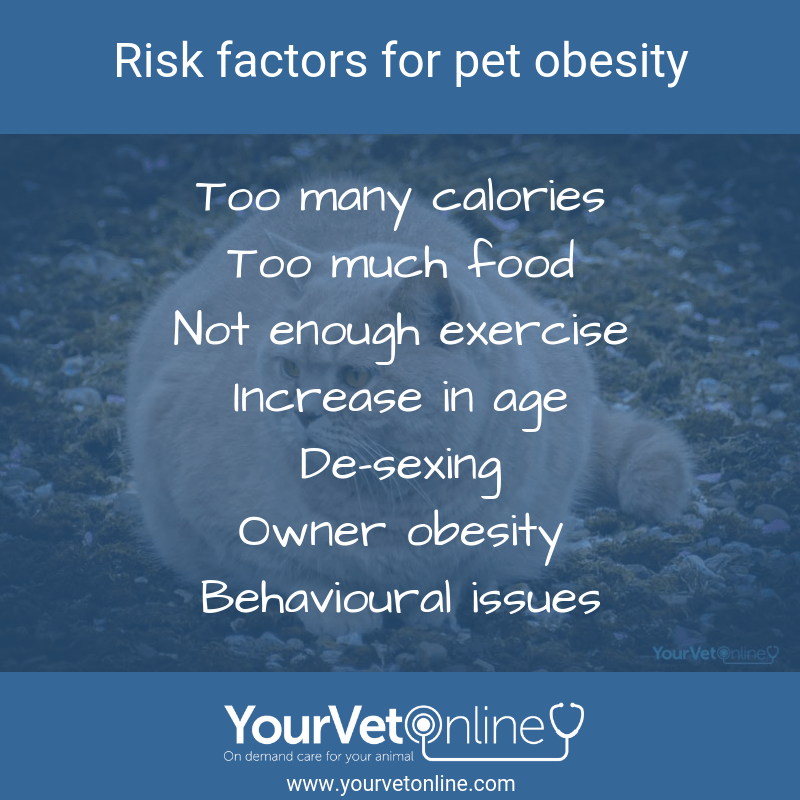
Why Is My Cat Obese?
A cat is called obese when it weighs an extra 20% of its optimal weight.
Arguably the number of obese cats far outweigh trim and slim cats. The main cause of this is the change in lifestyle that we as owners now lead. Yes, for the vast majority of overweight cats, it is our fault that they are this way.
Some of the reasons why our cats become overweight include:
Environmental Changes
For many of us, our cats always used to roam the house and the yard. However, with changing times, we are now choosing to keep our cats inside. This could be for a number of reasons such as:
- decreased risk of being hit by a car
- ensure local wildlife are not attacked and harmed
- protection from fights with other cats that can then result in diseases such as feline aids
While most veterinarians agree that inside cats have less risk of disease and accidents, it is changing the way they behave and ultimately, how much they weigh.
As a result of these restrictive environmental changes, we are now seeing cats with little opportunity to exercise and the tendency to become lazy. There is no roaming and hunting for food like their trim ancestors.
This doesn’t mean we need to let our cats back outside. No way! What it does mean is that we have to improve the diets and exercise opportunities for our cats.
Nutritional Changes
The quality of many diets has improved greatly over the years, yet while the quality has improved, we are also feeding our cats far more than is necessary.
- diets have become more palatable and energy dense, with additives that promote overeating.
- many poor quality diets contain high levels of carbohydrate. Cats require little carbohydrate in their diet.
- it is very common for us to now use food as treats.
- many of us leave food out for our cats all day so that they ‘graze’ and have a high potential for overeating. For a cat that once evolved as a hunter, having food on-demand is a novelty and they sure learn to take full benefit!
Essentials Of Feeding Your Cat
- feed little and often,
- use puzzle feeders,
- vary the location where you place the food
- feed both during the day and the night
- use a shallow bowl – ceramic or glass, avoid plastic
- Avoid home-prepared food, choose a good quality commercial cat food
- Alternate or mix wet and dry cat foods
How To Assess If Your Cat Is Overweight
Just like us, cats come in many sizes and shapes and body conformation. For this reason, we don’t recommend using weight scales as the sole means of assessing your pet’s weight.
Some cats are very heavy due to bone density. They might be 8+kg but look lean and trim.
The best way to assess your cat’s weight is to use what we call the Body Condition Scoring (BCS).
With this system we grade your cat’s body condition on the scale of 1 to 9, where a BCS of 1 is very thin, 4,5,6 is ideal and 8,9 is obese.
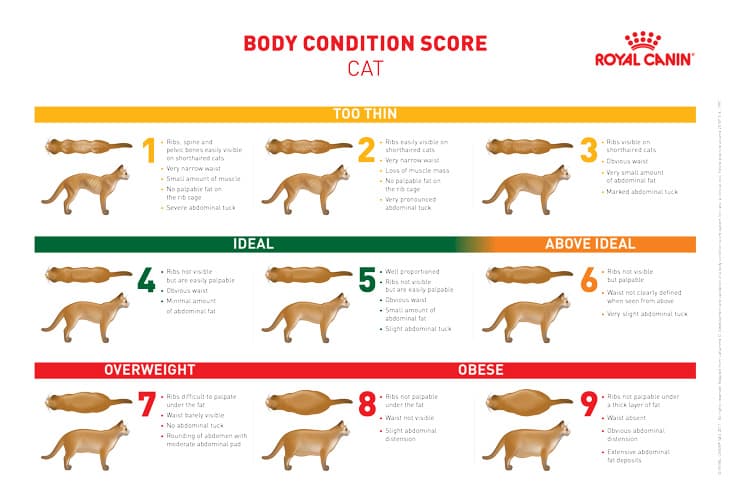
Use this body condition score chart to assess your cat’s body shape. Does he need to lose weight? (Royal Canin UK)
As you can see from the chart above, an obese cat is one where you have trouble feeling ribs as there is a thick layer of fat covering them.
Here is a downloadable sheet to help you assess your cat’s body condition score. You can use this to plot your cat’s weight loss journey.
Cat Body Condition Score Chart
It’s worthwhile to buy some baby scales when you do start your cat’s weight loss program.
When you are so close to your cat, it’s often difficult to notice changes in weight and body shape.
A weekly weigh in on scales along with regular photos allows you to monitor weight loss and ensure you aren’t going ‘too hard, or too fast’.
How To Help Your Cat Lose Weight
Now that we have worked out that our cat is overweight. What do we do about it?
The key to weight loss is based on the following:
- Diet Choice
- Calorie Restriction
- Exercise
How Quickly Can We Stimulate Weight Loss
Firstly, while we need to change our cat’s diet, we must do so with caution.
Cats are extremely prone to a condition called hepatic lipidosis or feline fatty liver disease.
This is a potentially lethal condition that can occur if we drop the caloric intake of our fat cat’s diet too abruptly.
In basic terms, our cat’s liver goes into overdrive and cannot cope with the amount of breaking down fat that is released due to starvation. The liver increases in size and becomes bloated with fat to the stage where it just cannot function. We don’t want this to happen to your cat.
With this in mind, we need to go slow with any changes to the amount as well as the type of food.
It’s important to go slow with the weight loss, aiming for only 1-2% loss of body weight per week.
What Cat Food Is The Best For Weight Loss?
The best food for cats is very similar nutrition-wise, as it is for us – high protein levels and low carbohydrates.
This encourages weight loss of fat, without associated muscle loss.
Traditionally, many people like to feed a kibble biscuit to their cats. It’s easy, it’s dry, and it doesn’t go off.
Hey, you can put it in a bowl and forget about it.
However, the vast majority of non-veterinary formulated kibble is just not suitable for our fat cats. (Please note we are not saying that you should not feed kibble to your cat).
Most kibble is formulated to be high in carbohydrates and much lower in protein.
In contrast, our cats require a high protein, low carbohydrate diet to ensure that they stay slim and don’t risk getting metabolic diseases such as diabetes mellitus.
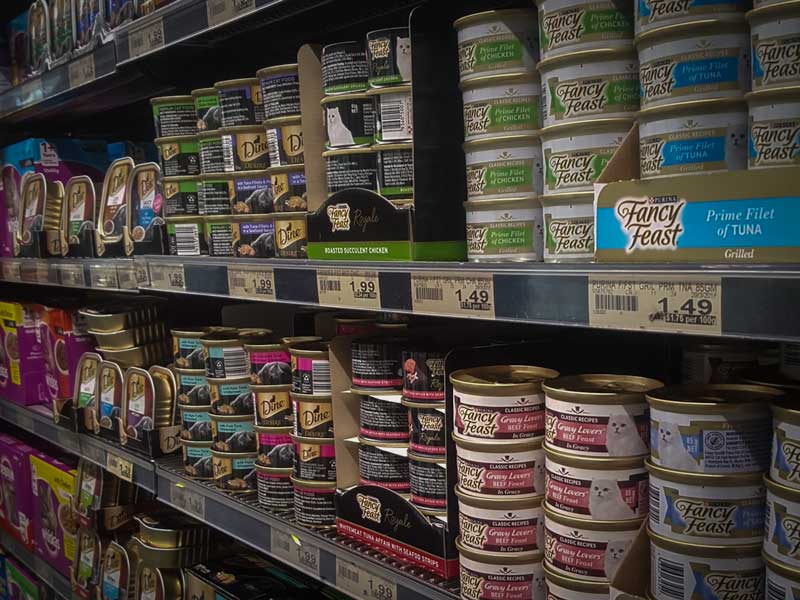
Canned food, on the other hand, tends to have a higher level of protein and fewer carbohydrates. But again, this is very dependent on the brand, with many supermarket brands being very low in protein.
Water does makeup over 70-80% of the content for many canned foods, which will help to increase our cat’s fluid intake. A good thing especially if they have any signs of kidney disease.
Feeding wet food can be advantageous as it encourages us to feed our cats a distinct meal, rather than letting them graze all day.
This means we can very easily maintain portion control.
Feeding a meat diet can be beneficial, however, just feeding meat is not enough.
Meat needs to be cooked and requires balancing with additives to ensure that it is balanced for our cat’s nutritional needs.
Zucchini is a great additive to a cat’s diet to bulk out the food and not add calories. Cat’s seem to love it and do very well.

Zucchini is a healthy low-calorie treat for cats.
If you do need to make a change to your cat’s diet to assist with weight loss, remember that slow changes are best.
- change from an old diet to a new diet gradually over 3-7 days
- mix a small amount of the new diet in with the old diet, I usually recommend about 1/4 at a time
- if no problems occur such as vomiting or diarrhoea and they are eating the new diet well, increase the amount of the new diet while concurrently decrease the amount of the old diet over a few days until only the new diet is being fed
- if your cat is turning up their nose at the new diet, make the change more gradual with a smaller amount over a longer period of time
Does My Cat Need Exercise?
Like every good weight loss program, we’d be remiss not to discuss exercise.
Just like us, our cats require exercise not just to keep fit and lean, but also for their mental well-being.
Many fat cats do very little exercise. Some because it’s physically too hard or painful (they are just too fat, or have obesity-related issues like arthritis).
In these situations, your vet can assist by providing pain relief options to allow your cat to be a little more pain-free, so they feel like moving more.
Importantly, we need to start playing with our cat more and building or providing them with areas where they can climb and explore.
Choose toys that encourage running, jumping and climbing to elevate your cat’s heart rate.
Puzzle feeders are a great tool to slow down fast feeding cats. There are plenty available to buy, or you can make them yourself.
 This Cat Ball will slow down how fast your cat eats his kibble.
This Cat Ball will slow down how fast your cat eats his kibble.
 This cat toy fishing rod is lots of fun for your cat.
This cat toy fishing rod is lots of fun for your cat.
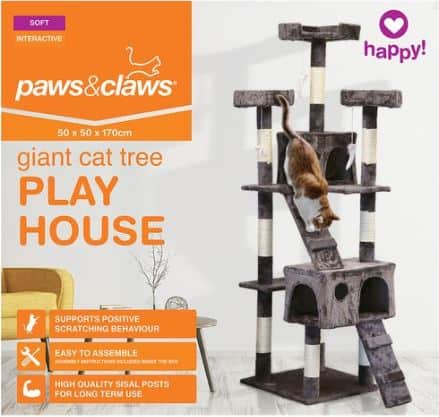 Cat love to climb and this giant tree climbing frame provides ample opportunity.
Cat love to climb and this giant tree climbing frame provides ample opportunity.
But My Cat Is Always Hungry
I know, I know. Your cat starts roaming and rubbing themselves against you meowing loudly. Your cat must be hungry, right? Wrong!
This type of behaviour is common. It is even seen in wild cats.
But if we start giving our cat food when they perform this vocalisation ritual…believe me…you will have a problem on your hands.
With every meow plus treat you give your cat, you are reinforcing the behaviour of ‘meow and I will get food’.
STOP. When your cat meows, NEVER give food.
This is a tough habit to break but I know you can do it.
Need Help To Get Your Fat Cat Trim?
I know just how hard it can be to stick to a program whether it’s for ourselves, let alone our cat! If you want Dr Leigh to help you out on this one sign up for the Pet Fit Program starting August 1.
Sign up now for more information and let us help you to help your cat.


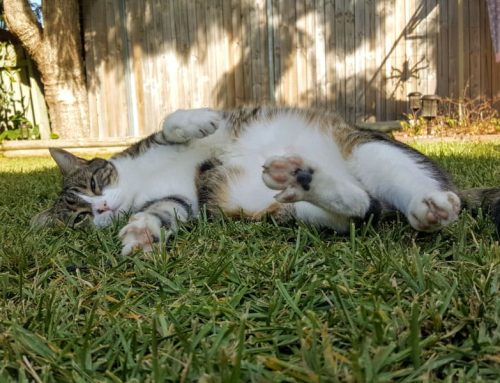
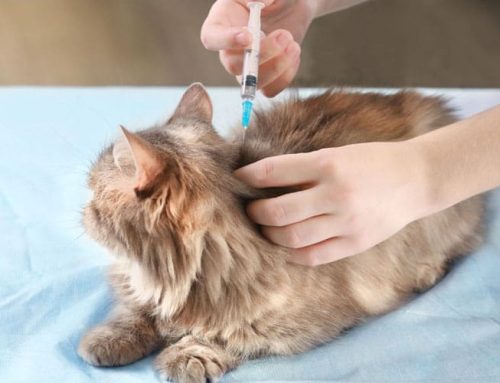
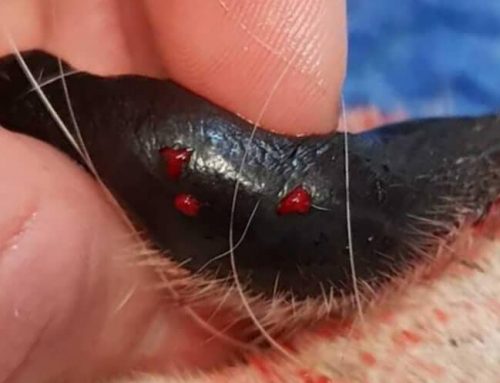
Leave A Comment